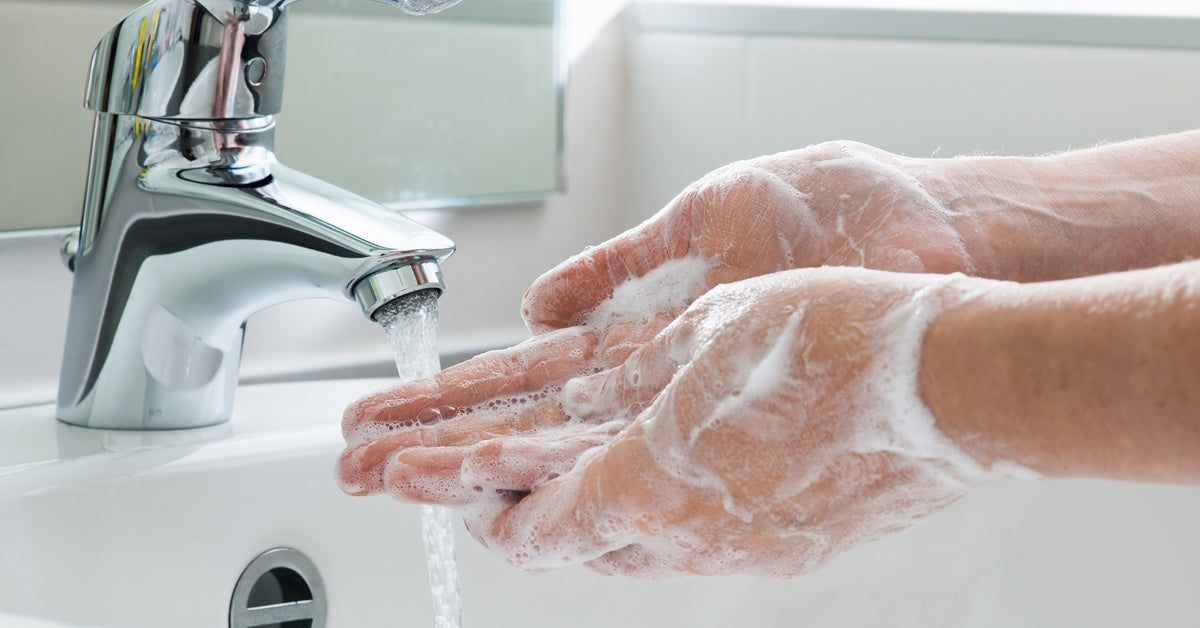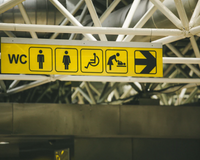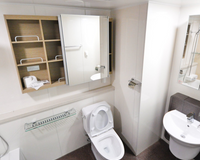Creating a consistently clean and welcoming restroom is essential for any public facility. Whether you run an office, manage a school, or oversee a busy shopping center, restroom hygiene speaks volumes about your commitment to public health.
Adopting simple strategies for better restroom hygiene can help you protect everyone who uses your facilities and demonstrate your dedication to providing a safe, comfortable experience. Keep reading to learn some practical steps you can take to keep your restrooms clean while reducing visitor complaints and making maintenance routines easier for your staff.
Install Automatic Fixtures
Upgrading your restroom with automatic fixtures is one of the quickest ways to support better hygiene. Touchless faucets limit the number of surfaces users must touch, drastically lowering the risk of spreading bacteria and viruses. When paired with automatic soap dispensers and hand dryers, you can create a contactless handwashing experience that minimizes contamination.
Many facility managers have also upgraded to commercial automatic paper towel dispensers. These allow users to take a fresh towel without touching any handles, which further restricts the spread of germs. This small change can have a big effect on the general cleanliness of your restrooms and the well-being of users.
Installing automatic fixtures also helps you manage resources more efficiently, reducing wasted water, soap, and paper towels. Some systems can even track usage levels, so you know exactly when it’s time to refill containers.
Provide Adequate Hygiene Supplies
Well-stocked restrooms signal to users that you care about their cleanliness and health. That’s why it’s important to ensure your facilities always have enough hand soap, sanitizer, toilet paper, and paper towels. Empty dispensers or a lack of supplies frustrate users and can lead to hygiene lapses, such as skipping handwashing or using insufficient substitutes.
You should regularly check dispensers throughout the day. A dedicated staff member can monitor supply levels and replenish items as needed, reducing the risk of users encountering empty containers or running out of toilet paper. Keeping restrooms stocked helps your visitors and prevents the mess created by people searching for alternatives.
Consider maintaining a backup supply in a nearby storage area. This practice makes it simple to restock, cuts down on disruption, and supports efficient cleaning routines.

Increase Cleaning Frequency
Facility managers should create clear cleaning schedules that adapt to visitor usage patterns. During peak hours or special events, restrooms should be checked and cleaned more frequently.
Addressing spills and debris in real time prevents problems from escalating. Encouraging your cleaning team to respond quickly to problems, such as clogged toilets or sinks, keeps hygiene standards high and prevents negative feedback from users.
A consistently clean environment also reassures building occupants that their safety is a priority. Cleaning logs kept on the back of restroom doors foster accountability and allow anyone to track when the last cleaning took place.
Use High-Quality Cleaning Products
Selecting the right cleaning products has a substantial impact on restroom hygiene. Choose disinfectants that have been tested and proven to eliminate bacteria and viruses, rather than relying on basic cleaners that may only address surface dirt. Reviewing product labels and safety data helps you pick the most effective solutions.
Sinks, toilet seats, and door handles benefit from targeted disinfectant wipes or sprays. Using these in daily cleanings provides an extra layer of protection against germs.
Ensure Proper Ventilation
Ventilation often gets overlooked, but it plays a crucial role in restroom cleanliness and user comfort. Bathrooms that lack airflow are prone to moisture buildup, which encourages the growth of mold and lingering odors.
Install or maintain ventilation systems that draw moist air out and bring fresh air in. Even a simple exhaust fan, when kept in good working condition, removes humidity and creates a more pleasant atmosphere.
Place Waste Bins Strategically
To promote tidiness and encourage proper waste disposal, place enough trash bins throughout the restroom area, and make sure they’re easy to find and use.
Paper towel dispensers should have a bin directly below or near them, so users can discard their towels without dripping water across the floor. Sanitary disposal bins should be available in each toilet stall to cater to all users’ needs.
Train Cleaning Staff Thoroughly
Offer comprehensive training on product usage and hygiene practices for your cleaning team. Walk staff through your cleaning protocols, and point out problem areas that need special attention. Encourage open communication so your team feels comfortable reporting broken fixtures or supply shortages. This approach empowers them to do their jobs safely, efficiently, and with confidence.
Post Signage To Encourage Handwashing
Handwashing is one of the simplest defenses against the spread of illness. Placing clear, visible signs near sinks and doors serves as a friendly reminder for guests and staff to wash up thoroughly after using the restroom. Creative signage can briefly list proper handwashing steps, using images or symbols for extra clarity.

Invest in Durable and Easy-To-Clean Materials
When designing or remodeling restrooms, select materials that are resilient and easy to clean. Nonporous surfaces such as ceramic tile, stainless steel, or high-quality laminates resist staining, moisture, and bacteria buildup. Fixtures made from these materials require less intensive cleaning and maintain their appearance over time.
Countertops, backsplashes, and stall partitions made from sturdy materials can endure frequent use and routine cleaning far better than cheaper options. This translates to lower long-term maintenance costs and a consistently hygienic space.
Regularly Inspect Restrooms
Inspections play a key role in maintaining good hygiene standards. Routinely checking restrooms for leaks, broken fixtures, or shortages of hygiene supplies allows you to identify and address issues quickly before they become bigger problems.
Using a simple checklist during inspections helps you standardize the process and ensure every detail receives attention. Immediate repairs and restocking make users feel valued and keep your restroom running smoothly.
A clean, inviting restroom sets a positive tone for your entire facility. By sticking to these simple strategies for better restroom hygiene, you can show everyone who enters your building that their comfort and well-being matter to you. Reach out to Choice Builder Solutions today to learn how our commercial restroom accessories can support your hygiene initiatives.





